
 |
||||||||||||||
|
|
|
|
|
|
|
|
|
|
|
|
|
|
|
|
|
|
|
|
|
|
|
|
||||||||
 |
|
|||||||||
 |
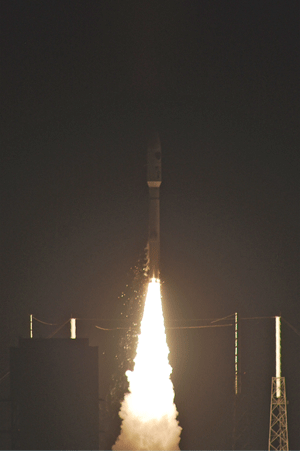 |
|
|
|||||||
|
|
 |
 |
|
|||||||
 |
|
|||||||||
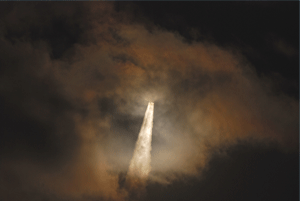 |
|
|||||||||
 |
|
|||||||||
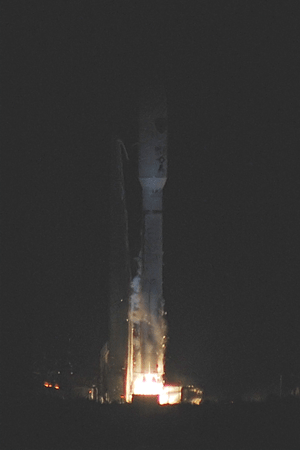 |
|
|||||||||
 |
|
|||||||||
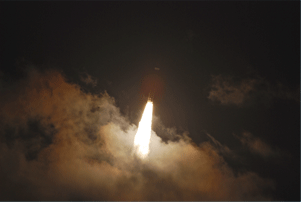 |
|
|
||||||||
 |
|
|||||||||
 |
|
|||||||||
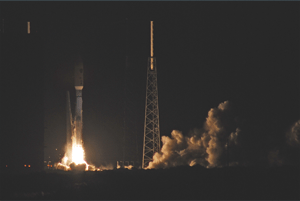 |
|
|||||||||
 |
|
|||||||||
 |
|
|||||||||
 |
|
|||||||||
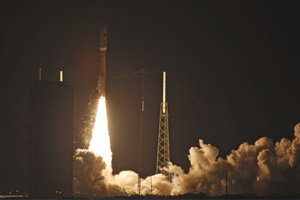 |
|
|||||||||
 |
|
|||||||||
 |
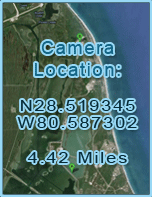 |
|
|
|||||||
 |
|
|||||||||
|
|
|
|
|
|||||||
|
|
|
|||||||||
|
|
|
|
|
|
|
|
|
|
|
|

|
Advanced Extremely High Frequency-3 Satellite United Launch Alliance Marks 75th Successful Launch by Delivering the Advanced Extremely High Frequency-3 Satellite to Orbit for the U.S. Air Force Cape Canaveral Air Force Station, Fla., (Sept. 18, 2012) � A United Launch Alliance (ULA) Atlas V rocket carrying the Advanced Extremely High Frequency-3 (AEHF-3) satellite for the United States Air Force lifted off from Space Launch Complex-41 here at 4:10 a.m. EDT today. This was ULA�s 9th launch of an ambitious 12 mission schedule for the year and marks the 40th Atlas V mission and the 75th launch for ULA. "The United Launch Alliance team is proud to serve alongside our mission partners and privileged that the Air Force has entrusted the ULA team to deliver the critical national security capabilities provided by AEHF-3 to orbit for our soldiers, sailors, airman and Marines around the world,� said Jim Sponnick, ULA vice president, Atlas and Delta Programs. � This mission was launched aboard an Atlas V Evolved Expendable Launch Vehicle (EELV) 531 configuration vehicle, which includes a 5-meter diameter RUAG Space payload fairing along with three Aerojet solid rocket motors attached to the Atlas booster. The Atlas booster for this mission was powered by the RD AMROSS RD-180 engine and the Centaur upper stage was powered by a single Aerojet Rocketdyne RL10A engine. �Today�s successful launch was the 75th since ULA was formed nearly seven years ago, the 40th Atlas V mission, and the fourth ULA launch in the last two months,� said Sponnick.� �The ULA team and our many mission partners emphasize a one-launch-at-a-time focus on mission success along with a strong commitment to continuous improvement � these elements together are the keys to launching our customer�s missions successfully at this unprecedented tempo in a reliable and cost-effective manner.� The AEHF constellation is a joint-service satellite communications system that will provide survivable, global, secure, protected and jam-resistant communications for high-priority military ground, sea and air assets. Developed by the United States Air Force to provide assured access to space for Department of Defense and other government payloads, the EELV Program supports the full range of government mission requirements, while delivering on schedule and providing significant cost savings over the heritage launch systems. � AEHF-3 SATELLITE | Overview The AEHF system is a joint service satellite communications system providing survivable, global, secure, protected, jam-resistant communications for high-priority military ground, sea and air assets. Advanced EHF allows the National Security Council and Unified Combatant Commanders to control tactical and strategic forces at all levels of conflict through general nuclear war and supports the attainment of information superiority. The AEHF system augments and improves on the capabilities of Milstar and expands the SMC/MC architecture. It provides connectivity across the spectrum of mission areas, including land, air and naval warfare; special operations; strategic nuclear operations; strategic defense; theater missile defense; and space operations and intelligence. The AEHF system is composed of three segments: space (the satellites), ground (mission control and associated communications links), and terminals (the users). The segments provide communications in a specified set of data rates from 75 bps to approximately 8 Mbps. The space segment consists of a cross-linked constellation of four satellites in geosynchronous earth orbit. The mission control segment controls satellites on orbit, monitors satellite health, and provides communications system planning and monitoring. This segment is highly survivable, with both fixed and mobile control stations. System uplinks and crosslinks operate in the extremely high frequency (EHF) range and downlinks in the super high frequency (SHF) range. The terminal segment includes fixed and ground mobile terminals, ship and submarine terminals and airborne terminals used by all of the services and international partners: Canada, the Netherlands, and the United Kingdom. Weighing in at approximately 13,600-lb fully fueled, the satellite is based on the Lockheed Martin A2100 commercial satellite that includes hall current thruster electric propulsion, which is 10 times more efficient than conventional bipropellant systems. The thrusters remove orbit eccentricity during transfer orbit operations, orbit maintenance and satellite repositioning. The payload features onboard signal processing and crossbanded EHF/SHF communications. Increased coverage is provided by antennas consisting of two SHF downlink phased arrays, two crosslinks, two uplink/downlink theater anti-jam nulling antennas, one uplink EHF phased array, six uplink/downlink gimbaled dish antenna, one each uplink/downlink earth coverage horns. Atlas V AEHF-3 | Mission Overview The third AEHF mission will be flown on an easterly trajectory from Space Launch Complex 41 (SLC-41) at Cape Canaveral Air Force Station (CCAFS), Florida. The satellite will be released into a supersynchronous transfer orbit. Following separation, the satellite will tailor its orbit using an on-board propulsion system and begin its mission. Mission telemetry data will be gathered by TEL-4 (Merritt Island), Antigua, Diego Garcia, and Guam Tracking Stations. The orbiting Tracking and Data Relay Satellite (TDRS) constellation will also participate in gathering telemetry during the AEHF-3 mission. The mission begins with RD-180 engine ignition approximately 2.7 seconds before liftoff (T-2.7 seconds). SRB ignition takes place at T+0.8 seconds after telemetry indication of healthy RD-180 startup. Liftoff occurs at T+1.1 seconds. Shortly after the vehicle clears the pad, it performs its pitch/yaw/roll maneuver. Maximum dynamic pressure peaks during the flight at approximately 46.7 seconds. The SRBs burn out at approximately 92 seconds. The first two SRBs are jettisoned 115 seconds into the flight; the third is jettisoned at approximately 116 seconds. The PLF and FLR jettison events take place at 209 and 214 seconds, respectively, during the boost phase of flight. Booster engine cutoff (BECO) occurs at approximately 257 seconds. Centaur separation occurs 6 seconds after BECO with Centaur main engine start (MES-1) occurring 16 seconds later. Just after 14 minutes into the mission, the first Centaur main engine cutoff (MECO-1) occurs. At 22 minutes into the mission, Centaur reorients itself for its second main engine start (MES-2). The second Centaur engine burn lasts approximately 5 minutes, followed by the second Centaur main engine cutoff (MECO-2). After MECO-2, Centaur reorients its attitude for spacecraft separation and begins a passive thermal control roll (PTC). AEHF-3 separates about 51 minutes after liftoff. ATLAS V 531 | Vehicle Overview The Atlas V 531 consists of a single Atlas V booster stage, the Centaur upper stage, three solid rocket boosters (SRBs), and a 5-m payload fairing (PLF). The Atlas V booster is 12.5 ft in diameter and 106.5 ft in length. The booster�s tanks are structurally rigid and constructed of isogrid aluminum barrels, spun-formed aluminum domes, and intertank skirts. Atlas booster propulsion is provided by the RD-180 engine system (a single engine with two thrust chambers). The RD-180 burns RP-1 (Rocket Propellant-1 or highly purified kerosene) and liquid oxygen, and it delivers 860,200 lb of thrust at sea level. The Atlas V booster is controlled by the Centaur avionics system, which provides guidance, flight control, and vehicle sequencing functions during the booster and Centaur phases of flight. The SRBs are approximately 61 in. in diameter, 67 ft in length, and constructed of a graphite epoxy composite with the throttle profile designed into the propellant grain. The SRBs are jettisoned by structural thrusters following a 92-second burn. The Centaur upper stage is 10 ft in diameter and 41.5 ft in length. Its propellant tanks are constructed of pressure-stabilized, corrosion resistant stainless steel. Centaur is a liquid hydrogen/liquid oxygen- (cryogenic-) fueled vehicle. It uses a single RL10A-4-2 engine producing 22,300 lb of thrust. The cryogenic tanks are insulated with a combination of helium-purged insulation blankets, radiation shields, and closed-cell polyvinyl chloride (PVC) insulation. The Centaur forward adapter (CFA) provides the structural mountings for vehicle electronics and the structural and electronic interfaces with the spacecraft. The AEHF-3 satellite is encapsulated in the Atlas V 5-m diameter short PLF. The 5-m PLF is a sandwich composite structure made with a vented aluminum-honeycomb core and graphite epoxy face sheets. The bisector (two-piece shell) PLF encapsulates both the Centaur and the spacecraft, which separates using a debris-free pyrotechnic actuating system. Payload clearance and vehicle structural stability are enhanced by the all-aluminum forward load reactor (FLR), which centers the PLF around the Centaur upper stage and shares payload shear loading. The vehicle�s height with the 5-m short PLF is approximately 197 ft. Rescue Wing Airmen support Atlas V rocket launch While the U.S. Air Force was successfully launching the third Advanced Extremely High Frequency (AEHF) satellite Airmen and HH-60G Pave Hawks from the 920th Rescue Wing safeguarded the hazard zone. Hours before this morning's launch, two rescue helicopters took off from Patrick AFB in Cocoa Beach on its mission in support of Cape Canaveral Air Force Station. The 920th patrols the hazard or "safe" zone surrounding the launch pad to ensure boaters are a safe distance from potentially falling rocket debris. The 920th RQW performs combat search and rescue as its primary mission, which includes rescuing downed pilots. Additionally the 920th RQW is responsible for civil search and rescue, humanitarian relief and support of rocket launches. To date, the unit has saved more than 3,000 lives, both in peacetime and combat. To date Air Force rescue forces from around the globe have saved more than 12,200 U.S., allied and host nation forces in conflicts worldwide since Sept. 11, 2001, and have rescued more than 5,000 people during catastrophic natural disasters and other responses. |